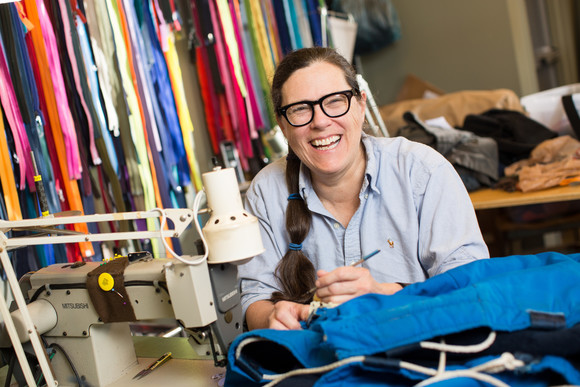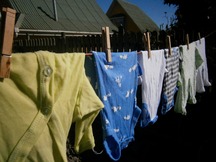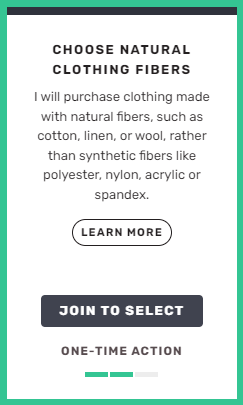|
When you joined the Plastic-Free Challenge, you may not have been thinking about what’s inside your closet. However, a lot of our clothing is made from plastic fibers, which contribute to microplastics in our water and environment. Today we will discuss caring for our clothes, simplifying our wardrobe, and being thoughtful about new purchases as methods to reduce plastic use.
 Care for the clothes you already have
Making the clothes you have last longer is a great way to reduce demand for new plastics. Washing and drying correctly as well as making simple repairs like sewing on a button, redoing a hem, or patching a hole can greatly extend your clothing’s useful life. Care for your clothes by:

- Learning tips for the best way to wash your laundry (check out the wikiHow article on doing laundry).
- Using a laundry line or clothing rack for drying.
- Making a habit to check the care tag for washing and drying instructions specific to the fabric.
- Searching the internet for mending skills or getting one-on-one repair assistance at a Fix-It Clinic near you. Find a list of upcoming Fix-It Clinics in Hennepin County, Ramsey County, and Washington County.
|
Simplify your wardrobe
Minimalist and “capsule wardrobes” can reduce plastic waste when done well. The basic concept is to simplify your wardrobe to fewer, versatile clothing pieces that you can mix and match, let go of the clothes you need “just in case…” and shop less frequently and more intentionally by only buying clothes that you love and that fit your body and your lifestyle. You can find endless tutorials and tips online.
Even though you can donate usable clothing, the best option is to stop buying clothes you won’t wear. Secondhand stores receive large amounts of clothing, and they can’t always sell it back in the same community.
Changing up your wardrobe

Do what you can to reduce the amount of new clothing you buy when you need to switch up or add to your wardrobe.
You can find new-to-you pieces at thrift stores, clothing swaps, or local garage sales. Some secondhand stores, like Arc's Value Village, have personal shopper services to help with your selection. You can increasingly find used clothing through online sources as well if you prefer that experience.
If you can, pay attention to what the clothes are made from and choose natural fibers such as cotton, wool, linen or cellulose when it makes sense.
Find secondhand retailers in your county:
Simplifying and changing up your wardrobe can be a big project, but you can slowly curate your lower waste wardrobe and save plastic over time.
|
Take action

If you want to keep plastics out of your wardrobe, choose these actions in the at home category:
- Choose natural clothing fibers
- Skip the dryer sheets
- Ditch the plastic dry cleaning bags
- Shop used
|
See the impact of our actions add up
When you’re on your dashboard, remember to check out the impacts page to see the effect of our actions. So far this challenge, the efforts of 1,713 participants have resulted in:
- Over 250 pounds of packaging waste prevented
- Over 3,100 pounds of carbon dioxide emissions avoided
- Over 1,100 plastic bottles not sent to the landfill
- More than 15,600 minutes spent learning
Keep it up! The impacts will continue to grow as everyone completes more actions.

Friday, February 2: Tips for getting started with the challenge
Monday, February 5: The problem with plastics
Wednesday, February 7: Types of plastics
Friday, February 9: Effectiveness of plastics recycling
Monday, February 12: Going plastic-free with your family
|